#hydrogen yacht
Explore tagged Tumblr posts
Text
#hydrogen yacht#eco friendly#luxury yacht#sunreefyachts#sustainable#yacht#design#green propulsion#eco yacht
0 notes
Text




Ruma Design's "Migma"
#art#design#superyacht#megayacht#ocean#luxury yacht#sea#boat#ship#architecture#yacht concept#render#ruma design#hydrogen power#migma#mixture#billionaire#billionairelife#concept
25 notes
·
View notes
Text
Markish
Markish is an English language of the German family of languages which evolved on the island of Albion. It is closely related to other English languages like Kentish and Wessern, and is the primary language of the polity of Markland.
Contemporary Markish descends form the Early Markish spoken in Markland, which itself descends from Anglian varieties of Old English.
This article principally describes the acrolect of Markish spoken in and around the capital city of Tommarth.
Examples
A jalicked knave bought a new quistre. /ə ˈdʒa.lɪ.kəd knɛːv bɔft ə nəu ˈkwɪ.stə/ A guy in a tuxedo bought a new phone. Aquifex is the temendest corporal. /ˈa.kwɪˌfɛks ɪz ðe ˈtiː.mən.dəs ˈkoː.pʊ.ɾəl/ Hydrogen is the most abundant element. Do thy breches of and put thysel abed! /duː ðəi ˈbɾiː.tʃəz ɔf ən pʊt ðəiˈsɛl əˈbɛd/ Take off your clothes and get on the bed! By way o'dreend al therin ough, he asked "As swich?" /bəi wəi əˈdɾiː.ən‿dal ðəˈɾɪn uːf | hiː ˈa.skəd | az swɪtʃ/ While doing everything wrong, he asked "Like that?" Psolick tersures may breken wines brewing of. /ˈsɔ.lɪk ˈtɛː.zjəz məi ˈbɾiːkə wəinz ˈbɾəwɪŋg ɔf/ Sulphites can stop wine fermentation.
Phonology
Consonants
The consonant phonemes found in Markish are:
/m n/ /p t tʃ k/ /b d dʒ g/ /f θ s ʃ h/ /v ð z/ /w l ɾ j/
and they are subject to the following orthographic conventions:
b d f h k l m n p t v w z represent their IPA symbols.
j r y represent /dʒ ɾ j/ respectively.
c usually represents /s/ before i e y and /k/ elsewhere.
awice /əˈwəis/ "indeed" < OE ġewiss "certain" coholl /kʊˈhɔl/ "sulfide" < Ar كُحْل "kohl"
g usually represents /g/ but may represent /dʒ/ before i e y.
eagre /ˈeː.gə/ "acid" < L ācer nargill /ˈnaː.dʒɪl/ "coconut" < Ar نَرْجِيل "coconut palm" girl /geːl/ "young person"
q appears almost always in the diagraph qu to represent /kw/.
quoit /kwəit/ "tyre, torus"
s represents /z/ between vowels and word-finally (unless doubled), and /s/ otherwise.
Brasil /bɾəˈzɪl/ "Newfoundland" < Ir Breasail betimes /bɪˈtəimz/ "earlier" surblavick /soːˈblɛː.vɪk/ "ultraviolet" < L blavus "blue"
x represents /gz/ between vowels, and /ks/ otherwise.
oxy /ˈɔg.ziː/ "stubborn" œculux /ˈɛ.kjəˌlʊks/ "EM radiation" < Gr οἶκος "house", L lux "light"
There are several digraphs of letters with -h: ch gh ph sh th wh.
ph sh wh represent /f ʃ f/.
ch usually represents /tʃ/, but sometimes also /k/.
chalk /tʃalk/ "chalk" yacht /jakt/ "cult" < Du jaght "hunting party"
gh usually represents either /ʃ/ (following i) or /f/ (following u).
wight /wɪʃt/ "person" < OE wiht "thing, creature" ough /uːf/ "bad" < OE wōh "wrong, crooked" NB I'ght /ˈəift/ "I must", contracted from I ought
th usually represents either of /θ ð/, and sometimes /t/.
thrift /θɾɪft/ "energy" < ON þrift "prosperity" yeathre /ˈjeːðə/ "together" < OE geador
There are several situations in which written consonants may be silent.
In certain endings: participle -end /ən/, infinitive -en /ə/, superlative -est /əs/.
discurrend /dɪˈskʊ.ɾən/ "different" < L discurrēns "roaming" chammen /ˈtʃa.mə/ "to chew" (poss. onomatopoetic) tharvest /ˈθaː.vəs/ "least sociable" < OE þeorf "unleavened"
Coda r lengthens the preceding vowel and word-final -re is pronounced /ə/.
interpel /ɪnˈtɛː.pəl/ "interact with" < L interpellō "I disturb" sundre /ˈsʊn.də/ "many" < OE sundor "separately"
Post-tonic -st- immediately before a closed syllable is pronounced /s/.
hirstend /ˈheː.sən/ "extra" < OE hyrstan "to ornament" pistol /ˈpɪ.səl/ "message" < L epistola
Likewise, post-tonic -v- is lost in some common words.
morovre /mʊˈɾoː(ə)/ "as well" evre /ɛː(ə)/ "always"
Vowels
The vowels of (this variety of) Markish are:
/a ɛ ɪ ɔ ʊ ə/ /aː ɛː eː iː ɔː oː ʉː/ /əi əu/
and they are subject to the following orthographic conventions:
In stressed syllables, "short" a e i~y o u represent /a ɛ ɪ ɔ ʊ/.
sam /sam/ "set, collection" < OE samnian "gather" whelp /fɛlp/ "baby animal" quick /kwɪk/ "awake" thon /ðɔn/ "one, someone", contracted from the one bulk /bʊlk/ "cargo"
In unstressed syllables, a e i~y o u instead represent /ə ə~ɪ ɪ ʊ ʊ/—except word-finally, where /ɪ ʊ/ become /iː ə/.
defectend /dɪˈfɛk.tən/ "positively charged" behemoth /bɪˈhiː.mʊθ/ "hippopotamus" costumery /kʊˈstjəu.mə.ɾiː/ "fashion plate"
"Long" a e i~y o u represent /ɛː iː əi uː jəu/.
besake /bɪˈzɛːk/ "because" mete /miːt/ "standard, gauge" < OE metan "measure" ty /təi/ "to join" poke /puːk/ "container" < OFr poque "bag" huge /hjəudʒ/ "huge"
There are plenty of digraphs representing vowels.
Coda -r: ar er ir or ur represent /aː ɛː eː oː oː/.
davarn /dəˈvaːn/ "grand hotel, resort" < W tafarn "inn"
-a: ea oa represent /eː oː/.
roaden /ˈɾoː.də/ "to travel"
-e: ee ie ue represent /iː əi jəu/.
conspue /kʊnˈspjəu/ "to deride" < L cōnspuō "I spit upon"
-i/y: ai ei oi and ay ey oy represent /əi əi~iː əi/.
fain /fəin/ "willing(ly)"
-o: oo represents /uː/.
soon /suːn/ "as soon as"
-u/w: au eu ou and aw ew ow represent /əu əu əu~uː/.
blew /bləu/ "blue" coshow /ˈkɔ.ʃuː/ "rubber" < Quechua kawchu
40 notes
·
View notes
Text
It's estimated that by 2030 carbon and glass fibre composites (CFRP), materials commonly used in wind turbine blades, hydrogen tanks, airplanes, yachts, construction, and car manufacturing, will be a key waste stream worldwide. The annual accumulation of CFRP waste from aircraft and wind turbine industries alone is projected to reach 840,300 tonnes by 2050 -- the equivalent of 34 full stadiums -- if suitable recycling methods are not adopted. While recycling methods do exist, most of this waste currently goes to landfill or is incinerated. The production of "virgin" composites has further implications for the environment too, including resource depletion and high energy input during production. This is despite the existence of numerous methods to recycle carbon fibre composites which a research team at the University of Sydney says, if fully implemented, have the potential to significantly reduce energy use by 70 percent and prevent key streams of materials from going to waste.
Read more.
13 notes
·
View notes
Text
Chapter 3: Who are you who are so wise in the ways of science?

He was going to kill them one day. He really was. The non-stop bickering and screaming had brought Mr Cleese to the brink of madness and he was extremely close to being pushed beyond. With a firm thwack of a ruler against his desk, the class stopped whatever tomfoolery they had gotten into and spun to face him in record time. The willowy man stood there for a second, his face slowly becoming less red as his captive audience tittered in anticipation.
“Right! To-day, we shall be conducting the test for hydrogen gas, professionally known as the squeaky pop test” He emphasised his pronunciation on the p, for no other reason than he thought it was fun to say. “It will take the utmost amount of maturity, diligence and- What is it Isaac?” He sighed as the bedraggled boy put his hand up.
“Please Sir, will it be dangerous?”
“It will involve fire so yes”.
An excitable buzz arose from the group, though now, Mr Cleese was too tired to be annoyed. An overwhelming weight of disappointment hung over him as he tried to seize his pupil’s attention again. He turned on a Bunsen burner, switching it to a safety flame so all could see the magnificent orangey red blaze. He then pulled out a jar of hydrochloric acid and a small dish of magnesium strips.
“Who can tell me…” He paused for silence (which he more, or less, got) “Why this is the most appropriate method of finding Hydrogen gas?”
“It’s cheap”
“You can do it in twenty minutes”.
“Because hydrogen is colourless and odourless”.
“You ran out of ideas”.
He scanned the room.
“Who said it was because it is colourless?” Bevis Larch raised his hand. Mr Cleese pointed to him with a very subtle smile on his lips, indicating to the boy that he was indeed correct. Bevis grinned.
“We now pour some of this liquid into a vial and pop in a strip of magnesium” He demonstrated “Now we will…”
“Is this room 81?” A mousy, young woman had entered the lab, anxiously fiddling with a piece of paper with her red nails. Mr Cleese looked upon the stranger with an aroused curiosity. She didn’t look like a science teacher at all. Far too soft and pleasant looking. Though take off the glasses… She wasn’t half bad. Even if her jumper was far too large to have a proper look at her body. God, he was gross.
He nods “I wasn’t expecting an assistant though”.
“No, I know… I believe they have made a mistake” She gave him a charming smile. Christ, she’s going to be eaten alive…
He gestured to a lone chair at the very back of the classroom.
“I’m Frances, by the way”
“Right” He hurriedly indicated to the seat again, anxious to get the lesson going again after the interruption. After she had sat down, he let out a deep sigh and resumed explaining.
20 minutes later
“Now, I shall go through the safety regulations. One, no running with a lit splint. Two, watch where you put that flame. Three, If you hurt yourself… you brought it on yourself, man up”
All the students scraped their chairs across the floor as they stood up. There was a feeling of delightful eagerness in the room, which John hadn’t realised he had missed. Once hair had been tied up and bags placed under the desk, he took out the wooden splints and ordered his pupils to queue in an orderly queue.
“Ahem.” John turned to see two-year 13s by the door.
“Excuse me Sir, we’re here to talk about the school’s new medical society” A kempt young man, William Skife, smiled, a slightly less pristine boy clinging onto his arm. John knew him as Raymond Luxury-Yacht (though he could never pronounce it), as he had gained quite the reputation for faking illnesses to get out of class. Why he was hanging around someone as intellectually ambitious as Skife, John would never know… but he could guess.
“Skife, we’re a bit busy”.
“But I have a poster?” He almost whined.
“I made it,” Raymond smugly grinned.
Flicking them away like flies, John flung down the poster on his desk. Peeking across the rows of little heads, he noticed Frances intently staring at him. When she realised she had been caught, she uncrossed her legs and began to gaze at the ceiling. Murmuring something about safety flames, he left the students to light the splints and paced over to the unfamiliar admirer.
“I’m John”
“John” she repeated, soft as a cloud. It was like she hadn’t heard the most common name in the world before. Looking down at her, she was rather small and unremarkable. Dull green eyes, crooked nose and russet brown hair in a bun; Epitome of beauty she was not. However, her lips were plump, and a lovesick haze had painted her face with a vibrant blush. He’d even go so far as calling her… pretty.
“Frances, wasn’t it?”
“Yes!” She confirmed, overjoyed that he had caught her name “Frances Pinnet-Crump. I was supposed to be with Mr Jones, but I think there was a mix up… Had quite the hectic weekend. My mam has a new cooker, you see…”
John shut off at that point and instead focused on her, the young woman becoming increasingly attractive with each passing second. The smell of smoke brought him out of what was becoming a wet daydream and he swiftly turned to the direction of his desk which was half ablaze. The poster which he had thrown aside had caught a lite and was now burning like it had just been prosecuted by Matthew Hopkins. Students were screaming, he was screaming, everyone was screaming, except for Frances, who had borderline sprinted to the nearest fire extinguisher. Despite her quick thinking, she became stuck when using the instrument. Panicking, she passed it onto Louis, who most certainly didn’t know how to use it, and prioritised getting the students out of the building. Bert, believing this to be his hero opportunity, grabbed the extinguisher from him and ran towards the fire, automatically burning himself, his arm turning red.
John just kept screaming.
Ronnie surprisingly did know how to use it, and pulled the pin, quenching the flame with foam. Distant sirens meant that the fire department had been called (thanks to Frances) so everybody was left to look at the damage while slow-clapping Ronnie. Matron was now looking at Bert who was trying really hard not to cry. John felt sorry for him until he remembered that he was an idiot. Science classes across the year were cancelled, at least until they could find a new desk.
Mr Cleese, however, was in trouble.
In front of Headmaster Milligan, the 6,4-man felt tiny. Frances was standing beside him, though by her calm behaviour, she was probably going to blame it all on him. He didn’t know who he was going to blame yet.
“To say I’m disappointed is an understatement… John, mate. Out of everyone to not let an experiment go wrong, YOU WOULD LITERALLY BE THE PERSON WHO CRAFTED THAT LIST!”
John swallowed his breath as he was berated. Now he could understand why everyone feared him. This was a terrifying experience.
“Got anything to say?”
For once, John didn’t say anything. His voice seemed to want to crack and all he could spill were a few ‘umms’ and ‘wells’.
“May I say something, sir?” Frances smiled “I was reprimanding him on just this behaviour when the fire broke out. His lacklustre attitude to student’s safety? Why, If anyone is responsible for the fire it’s me.”
“But you were picking up on his failures on student welfare!”
“Causing him to be distracted!”
“But you were doing your job?”
“So they cancel each other out.” She said with a determined finish. John looked at her in awe. Clever little so-and-so.
That was apparently a good enough reason for John to be let off the hook, providing that Miss Pinnet-Crump supervised all of his lessons, for which she was only too happy to oblige.
“So… thanks for that.” They walked beside each other on their way back to the faculty dorms.
“No problem at all” A comfortable silence hung out between them, as they passed tree after tree.
“Do…Do you want to come back to my place?” John blurted out. It was blunt. It was crude. It was inappropriate.
“Fuck yes” It worked.
8 notes
·
View notes
Photo

The First Hydrogen-Powered Superyacht Is Here - Yachting Magazine
0 notes
Text


“AQUA” 112m fuel cell (hydrogen) superyacht Sinot Yacht Architecture & Design and Lateral Naval Architects via: tumblr.com/moneyisnobject
1 note
·
View note
Text
Hydrogen year zero starts
Who said that the new year starts in January? For the yachting industry, the real New Year, or should we say Year Zero, began in May with the launch of two of the most advanced yachts in terms of sustainable and environmentally friendly engines.
The first ‘game changer’ vessel was launched on 4 May in Amsterdam: the 119-metre Feadship Project 821, which can be considered the world’s first hydrogen-fuel-cell superyacht. This zero-diesel yacht, to be delivered at the end of this year, is designed to sail between ports or anchorages and run the yacht’s hotel cargo and services on the zero-emission energy of green hydrogen.
0 notes
Text

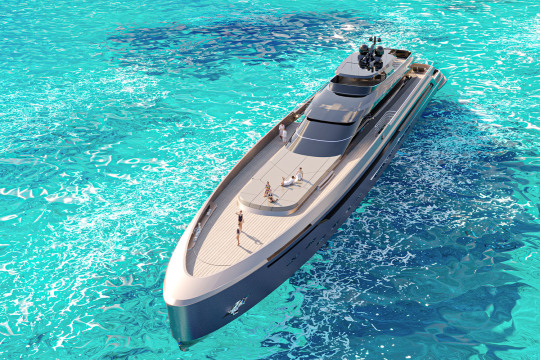
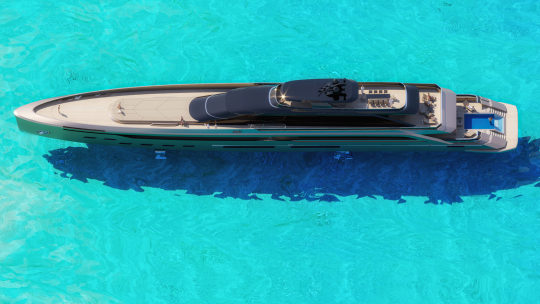
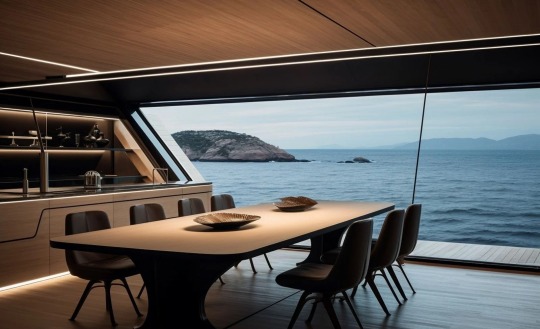
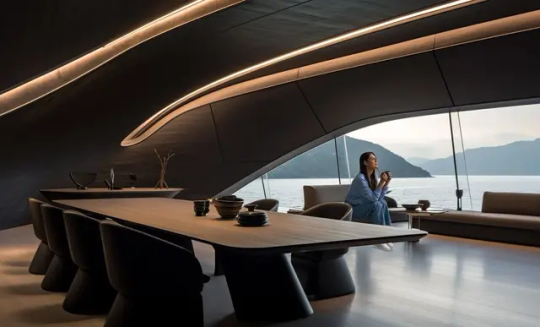


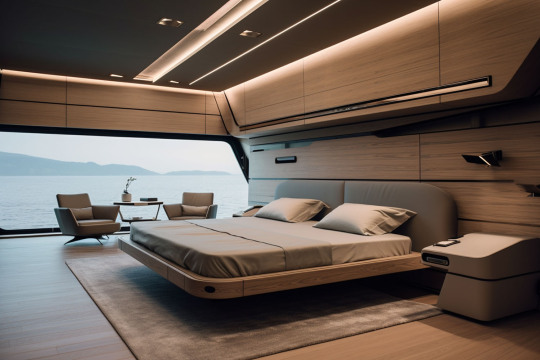
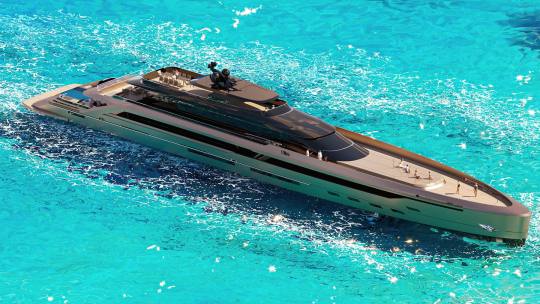
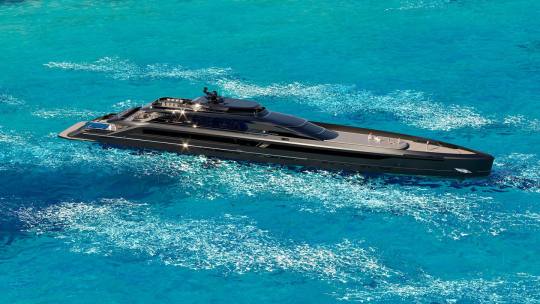

“ONYX H2-BO 85”
MASK Architects
#art#design#superyacht#megayacht#ocean#luxury yacht#sea#boat#ship#travels#concept#yachtconcept#render#billionaire lifestyle#billionaire#onyx#mask#hydrogen fuel
60 notes
·
View notes
Text
Exploring the Future of Seafaring: Electric Catamarans by Gilles Reigner Yachts
In recent years, the world of yachting and maritime exploration has seen a profound shift towards sustainability and innovation. One of the most exciting developments in this space is the rise of electric catamarans. Among the pioneering companies leading this charge is Gilles Reigner Yachts, a name synonymous with luxury and cutting-edge design in the yachting industry.
Evolution of Electric Catamarans: Catamarans, with their twin hulls and spacious layouts, have long been favored by seafarers for their stability, comfort, and efficiency. However, traditional catamarans have relied on fossil fuels for propulsion, contributing to environmental concerns such as pollution and carbon emissions.
Recognizing the need for a more sustainable approach, Gilles Reigner Yachts has embraced electric propulsion systems, revolutionizing the way we navigate the seas. By harnessing the power of electricity, these catamarans offer a cleaner, quieter, and more efficient alternative to traditional combustion engines.
The Advantages of Electric Propulsion Environmental Sustainability: Electric catamarans significantly reduce carbon emissions and minimize the ecological impact on marine ecosystems. With zero emissions during operation, they represent a crucial step towards a greener future for maritime transportation.
Silent Operation: Unlike conventional engines, electric propulsion systems operate almost silently, enhancing the serenity of the ocean experience. This quietude not only benefits passengers but also reduces noise pollution, preserving the tranquility of marine environments.
Enhanced Efficiency: Electric motors deliver instantaneous torque, resulting in swift acceleration and smooth cruising. Additionally, regenerative braking systems harness kinetic energy during deceleration, maximizing efficiency and extending the vessel's range.
Lower Operating Costs: While the initial investment in electric propulsion may be higher, the long-term savings on fuel and maintenance costs make electric catamarans a financially prudent choice. Furthermore, government incentives and subsidies for eco-friendly vessels further enhance the economic viability of electrification.
Cutting-Edge Design and Technology: Gilles Reigner Yachts combines decades of expertise with a relentless commitment to innovation, resulting in electric catamarans that push the boundaries of design and performance.
Streamlined Silhouettes: Each catamaran is meticulously crafted to optimize aerodynamics and hydrodynamics, minimizing drag and maximizing efficiency. Sleek lines and contemporary styling distinguish Gilles Reigner Yachts' vessels, setting them apart as icons of modern luxury.
State-of-the-Art Battery Technology: The heart of every electric catamaran lies in its advanced battery systems. Utilizing lithium-ion or hydrogen fuel cell technology, these batteries store and deliver power with unparalleled reliability and efficiency. With rapid advancements in battery technology, Gilles Reigner Yachts continues to push the boundaries of endurance and range, opening up new horizons for electric propulsion.
Intelligent Control Systems: Cutting-edge software and automation technologies optimize the performance and energy consumption of electric catamarans. From adaptive cruising algorithms to predictive maintenance systems, these smart controls ensure a seamless and intuitive experience for both crew and passengers.
Redefining Luxury on the High Seas: Beyond their environmental and technological prowess, electric catamarans by Gilles Reigner Yachts offer an unparalleled level of luxury and comfort.
Spacious Interiors: Expansive living areas, panoramic windows, and elegant furnishings create an atmosphere of refinement and relaxation. Whether hosting intimate gatherings or enjoying moments of solitude, passengers are enveloped in luxury at every turn.
World-Class Amenities: From gourmet kitchens to spa-like bathrooms, no detail is overlooked in the design of Gilles Reigner Yachts' electric catamarans. Each vessel is equipped with a host of amenities designed to cater to the discerning tastes of modern travelers, ensuring an unforgettable experience on the high seas.
Personalized Service: A dedicated crew of professionals stands ready to anticipate and fulfill every need, providing attentive service that exceeds expectations. Whether embarking on a short cruise or a transoceanic voyage, passengers can relax and indulge in the knowledge that their comfort and safety are paramount.
Conclusion: Navigating Towards a Sustainable Future Electric catamarans represent more than just a technological innovation; they embody a commitment to sustainability, luxury, and exploration. As Gilles Reigner Yachts continues to lead the charge toward a cleaner and more efficient maritime industry, the horizon of possibilities expands ever further.
With each voyage, these electric marvels redefine the boundaries of seafaring, offering a glimpse into a future where luxury and sustainability coexist in perfect harmony. As we embark on this journey, let us celebrate the spirit of innovation and stewardship that propels us towards a brighter, greener tomorrow on the open waters.
0 notes
Video
youtube
Survival Yachts and Yachting with Hydrogen Fuels
0 notes
Link
0 notes
Text
Electric Ships Market Trends, Growth, Competition Strategy and Forecast to 2028
An electric boat is any boat or boat whose essential impetus innovation is an electric drive framework. It tends to be a full-battery electric, hydrogen energy component electric, electric mixture boat or boat, from towing boats, ships, freight ships, and barges to visit boats, fishing vessels, cruising yachts, and automated submerged vehicles (UUVs). Electric boats are driven electrically, dissimilar to customary diesel motor boats. These boats utilize a battery stockpiling gadget as their power source to drive electric engines.
Report: https://www.theinsightpartners.com/reports/electric-ship-market
0 notes
Text
Hydrogen Fuel Cells for Boat Market Analytical Overview and Growth Opportunities by 2032
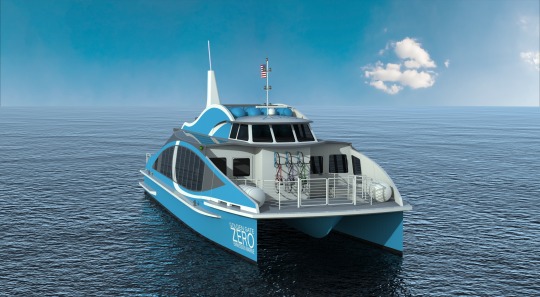
The hydrogen fuel cells for the boat market is experiencing significant growth due to the increasing demand for clean and sustainable energy solutions in the marine industry.Hydrogen fuel cells offer a viable alternative to conventional fossil fuel-powered engines, as they produce zero-emission and have higher energy efficiency.
Government regulations and initiatives promoting the use of eco-friendly technologies in the maritime sector are driving the adoption of hydrogen fuel cells for boats.The market is witnessing the development of advanced hydrogen fuel cell technologies, including improved storage and refueling infrastructure, which is further boosting market growth.
The increasing focus on reducing carbon emissions and achieving environmental sustainability goals by boat manufacturers and operators is propelling the demand for hydrogen fuel cells.suppliers, are crucial for the widespread adoption and commercialization of hydrogen fuel cells for boats.
Analytical Overview:
The hydrogen fuel cells for boat market is projected to experience substantial growth in the coming years, driven by the increasing demand for clean energy solutions in the maritime industry.
Market players are focusing on research and development activities to enhance the performance and efficiency of hydrogen fuel cell technologies specifically tailored for marine applications.
Government regulations and initiatives promoting sustainable shipping practices are expected to create a favorable market environment for hydrogen fuel cells.
The market is witnessing the emergence of new players and strategic partnerships, leading to technological advancements and the expansion of product portfolios.
Geographically, North America and Europe are anticipated to be the key regions for hydrogen fuel cells in boats, owing to the presence of established boat manufacturers and supportive government policies promoting renewable energy adoption. However, the Asia Pacific region is also expected to witness significant growth due to the growing maritime industry and increasing environmental concerns.
Segments:
Power Output: The market can be segmented based on power output capacity, ranging from low-power fuel cells suitable for auxiliary power to high-power systems for primary propulsion.
Boat Type: Segmentation can be done based on boat types, such as leisure boats, commercial vessels, ferries, and yachts, as the adoption of hydrogen fuel cells varies across these segments.
End Use: Another segmentation criterion is the end-use application, including passenger transportation, cargo shipping, naval vessels, and recreational boating.
Geography: The market can be segmented based on geographic regions, such as North America, Europe, Asia Pacific, and Rest of the World, as the adoption and growth potential vary across different regions.
Component: Segmentation based on components includes fuel cell stacks, hydrogen storage tanks, power electronics, and balance of plant (BOP) systems, which are essential for the overall functioning of hydrogen fuel cells.
Growth Opportunities:
Increasing Investments: Growing investments in research and development activities for hydrogen fuel cell technologies for boats present significant growth opportunities in the market.
Infrastructure Development: Expansion of hydrogen refueling infrastructure and charging networks for boats would encourage the adoption of hydrogen fuel cells in the maritime sector.
Collaborations and Partnerships: Collaborations between boat manufacturers, fuel cell suppliers, and infrastructure providers can drive innovation and accelerate the market growth.
Government Support: Continued support from governments through subsidies, incentives, and policy frameworks promoting the adoption of hydrogen fuel cells in the marine industry can fuel market growth.
Technological Advancements: Advancements in hydrogen fuel cell technologies, such as enhanced power density, improved durability, and cost reduction, will open up new growth opportunities for market players.
Key Points:
Hydrogen fuel cells offer longer operational ranges and faster refueling times compared to battery-powered systems, making them suitable for extended boating trips and commercial applications.
The transition towards hydrogen fuel cells aligns with the global maritime industry's efforts to decarbonize and reduce greenhouse gas emissions.
The adoption of hydrogen fuel cells in the boat market can significantly contribute to achieving international sustainability goals and addressing climate change concerns.
Challenges such as the high initial cost of hydrogen fuel cell systems and limited hydrogen refueling infrastructure need to be addressed to accelerate market growth.
Collaborative efforts among stakeholders, including boat manufacturers, governments, and fuel cell
We recommend referring our Stringent datalytics firm, industry publications, and websites that specialize in providing market reports. These sources often offer comprehensive analysis, market trends, growth forecasts, competitive landscape, and other valuable insights into this market.
By visiting our website or contacting us directly, you can explore the availability of specific reports related to this market. These reports often require a purchase or subscription, but we provide comprehensive and in-depth information that can be valuable for businesses, investors, and individuals interested in this market.
“Remember to look for recent reports to ensure you have the most current and relevant information.”
Click Here, To Get Free Sample Report: https://stringentdatalytics.com/sample-request/hydrogen-fuel-cells-for-boat-market/6003/
Market Segmentations:
Global Hydrogen Fuel Cells for Boat Market: By Company • Dynad International • PowerCell Sweden • Serenergy • Toshiba • Fiskerstrand Verft • MEYER WERFT • Nuvera Fuel Cells • WATT Fuel Cell Global Hydrogen Fuel Cells for Boat Market: By Type • Polymer Electrolyte Membrane Fuel Cell (PEMFC) • Solid Oxide Fuel Cell (SOFC) Global Hydrogen Fuel Cells for Boat Market: By Application • Yatchs • Sailboats • Others Global Hydrogen Fuel Cells for Boat Market: Regional Analysis All the regional segmentation has been studied based on recent and future trends, and the market is forecasted throughout the prediction period. The countries covered in the regional analysis of the Global Hydrogen Fuel Cells for Boat market report are U.S., Canada, and Mexico in North America, Germany, France, U.K., Russia, Italy, Spain, Turkey, Netherlands, Switzerland, Belgium, and Rest of Europe in Europe, Singapore, Malaysia, Australia, Thailand, Indonesia, Philippines, China, Japan, India, South Korea, Rest of Asia-Pacific (APAC) in the Asia-Pacific (APAC), Saudi Arabia, U.A.E, South Africa, Egypt, Israel, Rest of Middle East and Africa (MEA) as a part of Middle East and Africa (MEA), and Argentina, Brazil, and Rest of South America as part of South America.
Visit Report Page for More Details: https://stringentdatalytics.com/reports/hydrogen-fuel-cells-for-boat-market/6003/
Reasons to Purchase Hydrogen Fuel Cells for Boat Market Report:
• To obtain insights into industry trends and dynamics, including market size, growth rates, and important factors and difficulties. This study offers insightful information on these topics.
• To identify important participants and rivals: This research studies can assist companies in identifying key participants and rivals in their sector, along with their market share, business plans, and strengths and weaknesses.
• To comprehend consumer behaviour: these research studies can offer insightful information about customer behaviour, including preferences, spending patterns, and demographics.
• To assess market opportunities: These research studies can aid companies in assessing market chances, such as prospective new goods or services, fresh markets, and new trends.
• To make well-informed business decisions: These research reports give companies data-driven insights that they may use to plan their strategy, develop new products, and devise marketing and advertising plans.
In general, market research studies offer companies and organisations useful data that can aid in making decisions and maintaining competitiveness in their industry. They can offer a strong basis for decision-making, strategy formulation, and company planning.
About US:
Stringent Datalytics offers both custom and syndicated market research reports. Custom market research reports are tailored to a specific client's needs and requirements. These reports provide unique insights into a particular industry or market segment and can help businesses make informed decisions about their strategies and operations.
Syndicated market research reports, on the other hand, are pre-existing reports that are available for purchase by multiple clients. These reports are often produced on a regular basis, such as annually or quarterly, and cover a broad range of industries and market segments. Syndicated reports provide clients with insights into industry trends, market sizes, and competitive landscapes. By offering both custom and syndicated reports, Stringent Datalytics can provide clients with a range of market research solutions that can be customized to their specific needs
Contact US:
Stringent Datalytics
Contact No - +1 346 666 6655
Email Id - [email protected]
Web - https://stringentdatalytics.com/
#Hydrogen Fuel Cells for Boat Market#Hydrogen fuel cells for boats#Fuel cell-powered boats#Hydrogen-powered boats#Fuel cell propulsion systems for boats#Boat fuel cell technology#Boat hydrogen fuel cell integration#Marine fuel cells#Boat electrification#Clean energy boats#Sustainable boating#Hydrogen fuel cell range extenders for boats#Boat energy storage solutions#Boat emissions reduction#Boat decarbonization#Marine renewable energy#Boat fuel cell infrastructure#Boat fuel cell manufacturers#Boat fuel cell market trends#Boat fuel cell regulations#Boat fuel cell applications#Boat fuel cell advantages.#These tags cover various aspects of the Hydrogen Fuel Cells for Boat Market#including the use of fuel cell technology for boat propulsion#integration#electrification#energy storage#emissions reduction#decarbonization#renewable energy sources
0 notes
Text
Electrek.co: ALVA Yachts goes long with a 90-foot solar electric superyacht boosted by hydrogen and wing sails
0 notes